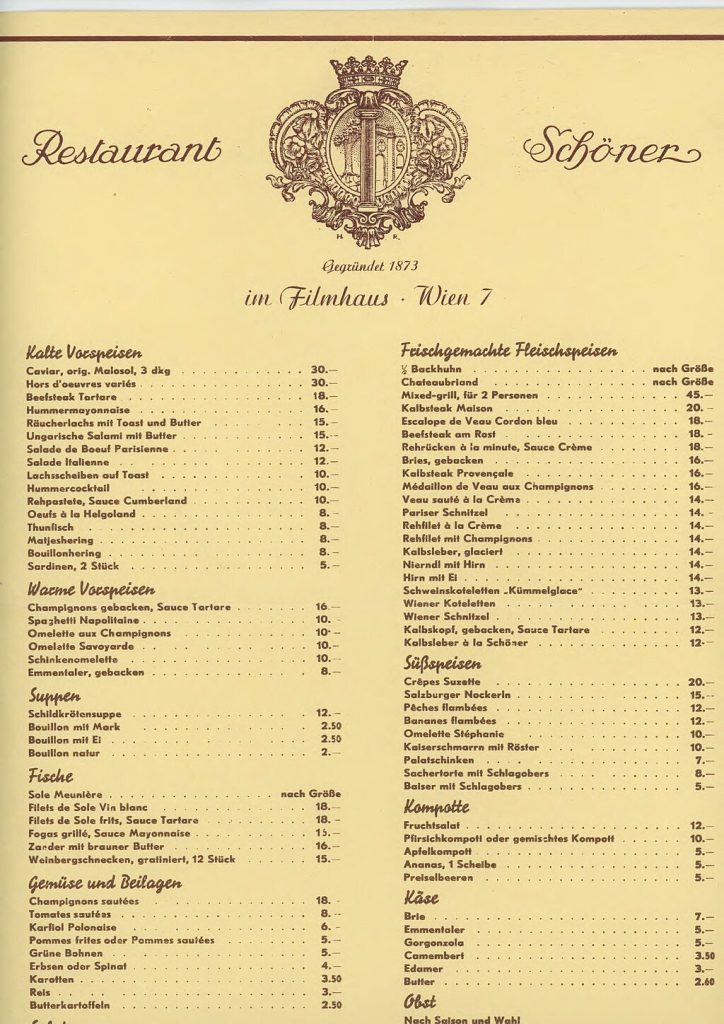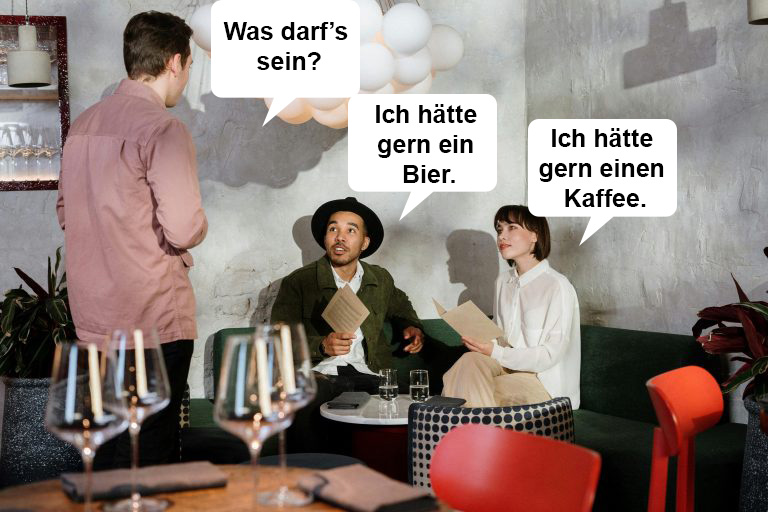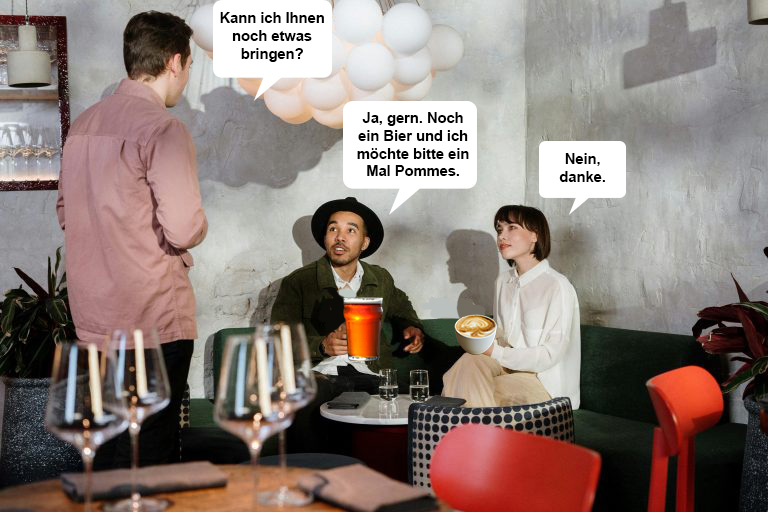6.13 Essen gehen

Guten Abend!
Zum Aufwärmen machen wir unseren Tagesminiplausch und eine Wiederholung.
Wiederholung
In the previous lesson, you learned what to expect at der Wochenmarkt und die Spezialgeschäfte. Let’s review what you have learned.
Wo kauft man frisches Obst? Wo kauft man Fleisch? Wo kauft man Brot? Think back on the names of the specialty shops you learned in the previous lesson. Then answer the questions in a complete sentence. For example: Man kauft frischen Käse in der Käserei.
Lektionsüberblick
Much like in America, many people enjoy dining out in Germany, so it’s important to know how to navigate the restaurant scene. In the end, you will be able to 1) pick a restaurant based on what you want to eat, 2) read a menu, 3) order your meal, and 4) pay for your meal.
Was weißt du schon?
Lets do a quick skills check before moving on to new material. Drag the food items into the type of store where one might shop for them in Germany.
| Noch nicht start klar?
Du kannst immer auf die gleiche 1010-Lektion zurückgreifen! |
Not confident about starting this lesson?
You can always review the same Lektion from 1010. |
1) ein Restaurant wählen (choosing a restaurant)
In major metropolitan areas in Germany, there is no shortage of different types of restaurants and international (or more traditional) cuisine. Was für Essen willst du essen? What type of food do you want to eat? Read, listen, and review the different types of cuisine below.
Now using the clues in the pictures, complete the activity below. Hint: Some images require that you look closely to see the clues.
Jetzt bist du dran!
2) die Speisekarte (the menu)
Although many German restaurants post their menu on a sign outside of the restaurant, you will most likely receive a Speisekarte once you are at your table. You will already recognize many of the words you might find there. Consider the Gerichte (dishes), Beilagen (side dishes), and Getränke (drinks) you have learned. You might also notice Vorspeise. What do you remember about the meaning of this word?
Let’s practice with some Speisekarte comprehension questions. Answer each question below.
 |
|
You can take a look at this additional resource to review and expand your restaurant vocabulary.
Jetzt bist du dran!
3) Ich hätte gern…
As is most languages there is more than one way to order politely. You already know one way, Ich möchte… Read and listen to other ways to order. Can you pick out the alternate way to order? Then read and listen to the second panel. Do you understand what is happening?
 |
 |
Now let’s check your comprehension.
Jetzt bist du dran!
4) Zahlen, bitte! (I’d/we’d like to pay.)
Your time at the restaurant is just about over, but first you have to pay. Listen and repeat how to ask for your check and how to ask if you can pay with a credit card.
 |
 |
| Zahlen, bitte! | Kann ich mit Karte zahlen? |
Your waiter might also ask you the following ja oder nein question.
Hat Ihnen alles geschmeckt?
You can answer with….Ja, danke or leider nein .
🎥You can watch as the bill for pizza delivery is paid on Nico’s Weg.
Kleiner Hinweis
As you might recall, tipping is different between the United States and Germany. When you pay a bill in Germany, you only give a small tip (das Trinkgeld) as the service charge is included in the bill in the German-speaking countries. Waitresses and waiters get higher hourly wages than in the North American context. Therefore, people usually tip less; you just round up to the nearest currency unit (9 Euro 20 -> you would give 10 Euro), or if the bill is larger, you round up and add a couple of Euros (37 Euro 40 -> you would give 40 Euro). With this in mind, if you intend to spend time in Germany, you will need to become comfortable with saying higher numbers aloud.
Jetzt bist du dran!
Zum Schluß

*As you conclude this lesson, don’t forget to check Canvas!*
Before you go!
You have completed your second semester of German! Herzlichen Glückwünsch! Think about all you have accomplished this semester. If you were traveling to a German-speaking country over break, you would already be able to have a solid conversation with a German-speaker.
Don’t end your language journey here, be sure to sign up for your next class and make plans to study abroad. As you go forward in your language learning (or want to keep up over break), you can always come back to this book (and Deutsch im Alltag I) to review!

Media Attributions
- Specialty Shop activity adapted from Grenzenlos Deutsch, licensed under a CC BY-NC-SA 4.0 International License.
- Kleiner Hinweis about Tipping was adapted from Willkommen: Deutsch für alle Copyright © 2020 by Claudia Kost and Crystal Sawatzky is licensed under a CC BY-NC-SA 4.0 International License.
Media Attributions
- 1020-banner-large-reduced
- 6.13 im restaurant scene 1
- 6.13 im restaurant scene 2
- Photo of customer getting waiter’s attention by pexels-cottonbro-9198186
- Photo of man looking at bill by pexels-yankrukov-6816413

